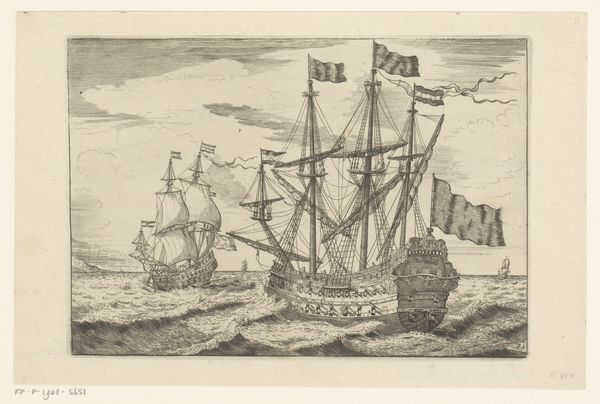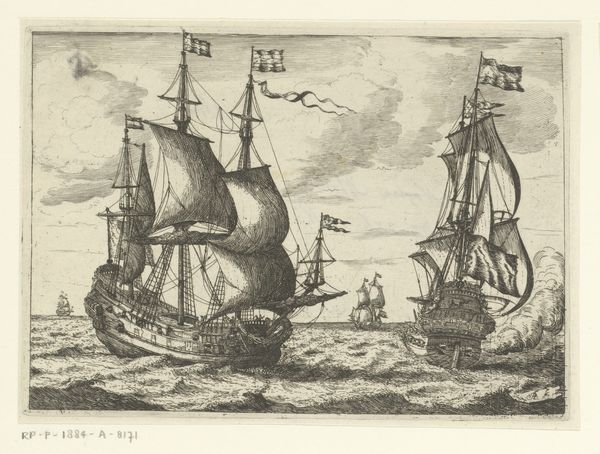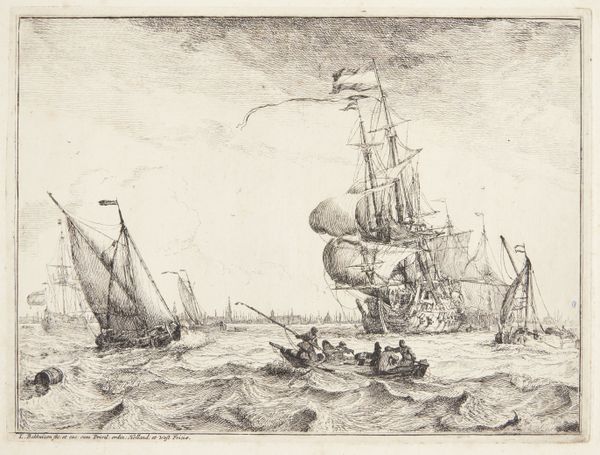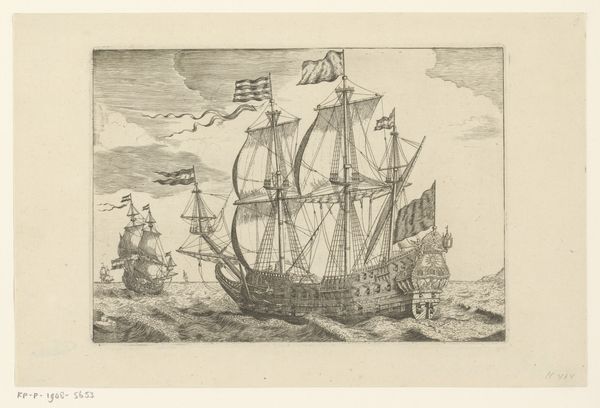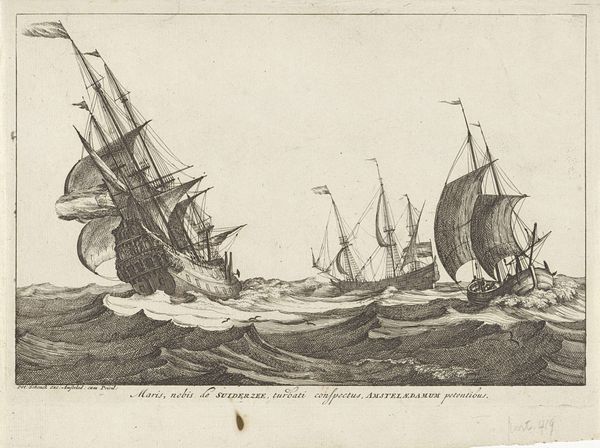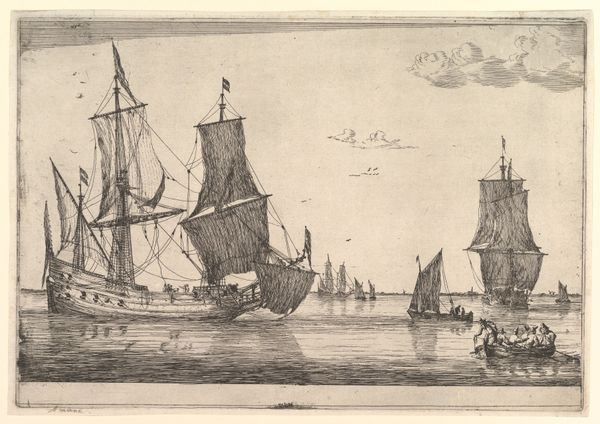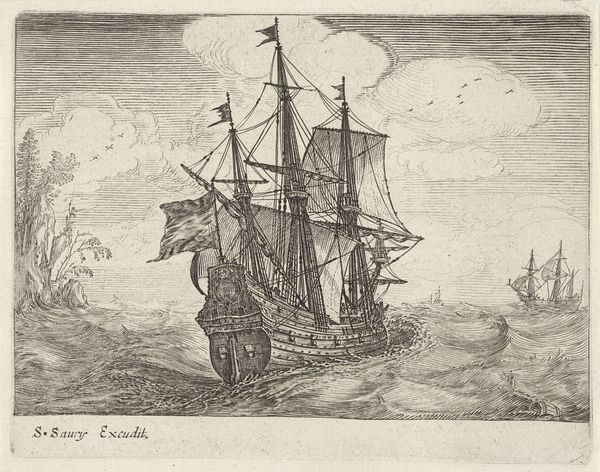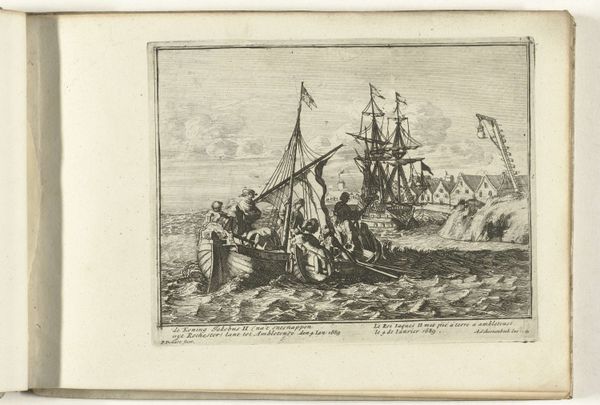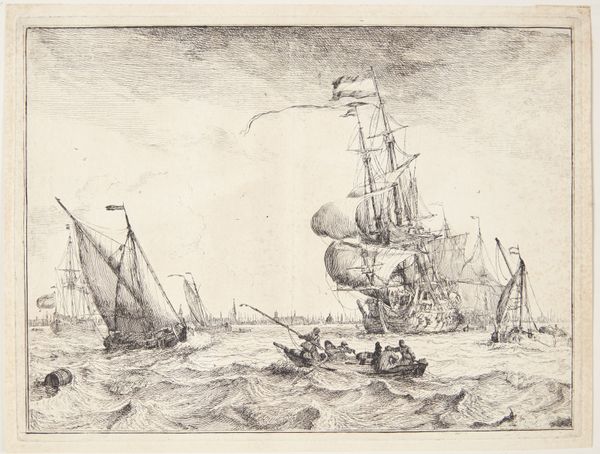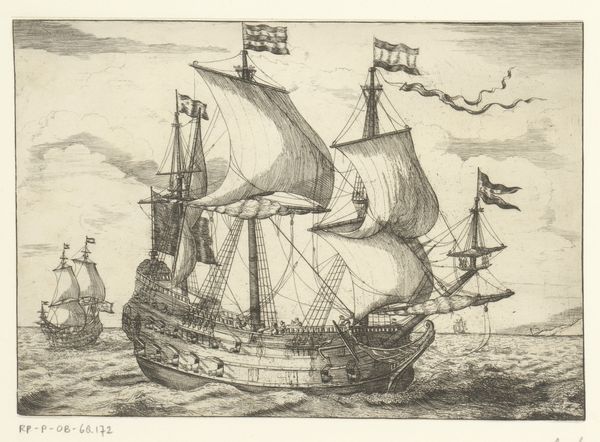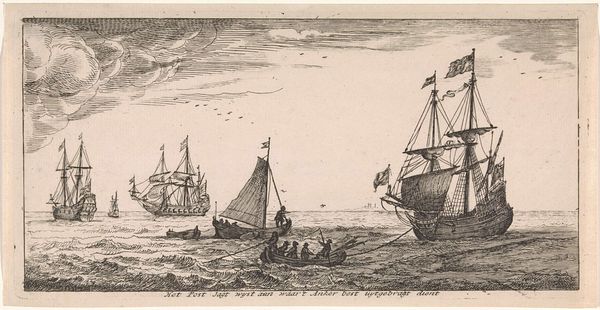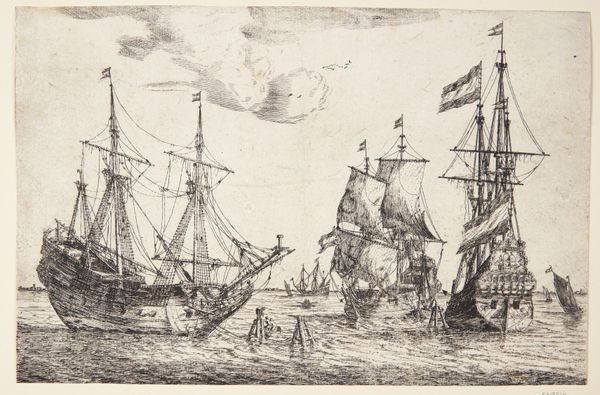
print, etching
#
baroque
#
dutch-golden-age
# print
#
etching
#
landscape
#
sea
Dimensions: height 151 mm, width 214 mm
Copyright: Rijks Museum: Open Domain
Editor: We’re looking at "Six Sailing Ships at Sea," an etching dating from between 1673 and 1709, by Monogrammist ABK. The ships seem to be battling a rather choppy sea; I’m struck by how dynamic the scene feels despite being a black and white print. What social or historical factors might have influenced this type of maritime imagery? Curator: Well, think about the period – the Dutch Golden Age. The Netherlands was a major maritime power, deeply involved in global trade and naval exploits. Seascapes like this weren’t just pretty pictures; they were potent symbols of Dutch power, prosperity, and national identity. How do you see this connection reflected in the artwork itself? Editor: The ships, flying Dutch flags, are prominently displayed, and the artist pays close attention to their details, so one gets a sense of Dutch maritime expertise on full display. It feels very much like a flex! Curator: Exactly! These images helped to cultivate a sense of national pride and legitimize the Dutch Republic’s global ambitions. But consider also the intended audience and where these prints would circulate. Were they meant for the wealthy merchant class, or did they have broader appeal? Editor: I imagine a print like this would be accessible to a wider audience than a painting. Did prints play a specific role in shaping public perception of the Dutch at the time? Curator: Absolutely. Prints allowed for the widespread dissemination of imagery. They helped to solidify the visual vocabulary of Dutch maritime dominance, impacting how the Dutch public perceived themselves and how other nations perceived them. These weren't simply artistic renderings; they were carefully constructed images meant to convey specific political and social messages. Editor: That's fascinating! I hadn't considered how a seemingly straightforward image of ships could be so loaded with cultural and political meaning. Curator: Indeed, analyzing art through a historical lens can really reveal the intricate relationship between aesthetics and social forces. It's more than just looking; it's understanding what the image *does* within a society. Editor: Thank you. That really changes how I will approach similar artworks going forward.
Comments
No comments
Be the first to comment and join the conversation on the ultimate creative platform.
